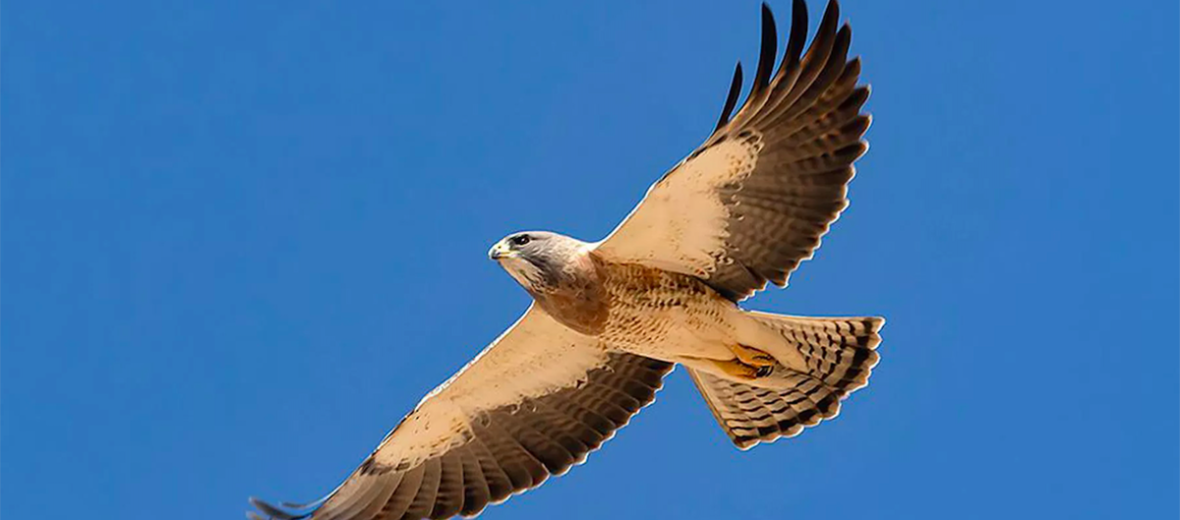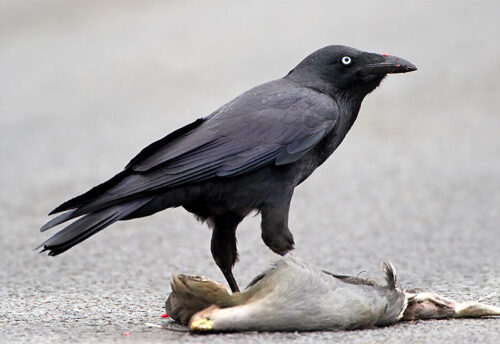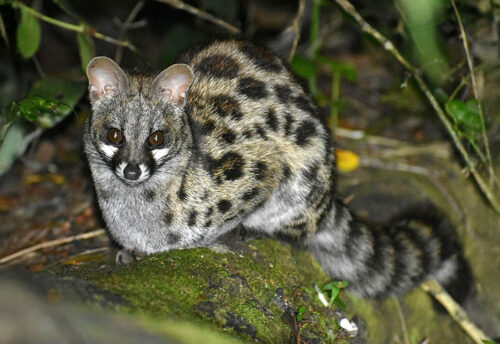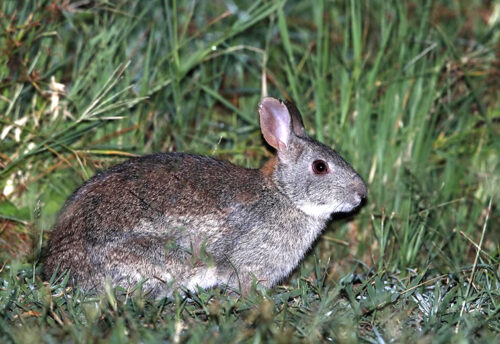
The Swainson’s hawk, aka locust hawk or grasshopper hawk, can be found from Canada, to the United States, to Mexico, Central America, and down into South America. These birds of prey inhabit savannahs, grasslands, shrublands, and prairies. Pastures, alfalfa fields, and hay fields are also frequented, as these habitats provide little to no protection for their prey. With an abundant and stable population of around 580,000, and no real threats, sans accidental poisoning from agricultural fields being sprayed with insect killing poisons, these birds are listed as Least Concern by the IUCN.
First the Stats…
Scientific name: Buteo swainsoni
Weight: Up to 3 lbs.
Length: Up to 22 inches
Wingspan: Up to 54 inches
Lifespan: Up to 19 years
Now on to the Facts!
1.) These raptors were named after the British naturalist, William Swainson.
2.) Swainson’s hawks migrate south each fall. Their migratory path takes them on an approximate 12,000+ mile round trip.
3.) Even though they are territorial, they will still gather into casts while migrating and when food is abundant.
4.) A group of hawks is called a cast, kettle, aerie, boil, or lease.
5.) They hunt both by perching and scanning the area for food and/or by soaring over their territory and using their keen eyesight to search for prey.
But wait, there’s more on the Swainson’s hawk!
6.) It is not uncommon to see a boil of Swainson’s hawks following agricultural equipment plowing fields. This is because the machines stir up mice, rats, gophers, moles, voles, and insects like grasshoppers that are easy to pick off. They will also hunt reptiles, amphibians, rabbits, and birds, such as sage grouses, mallards, and younger lark buntings.
7.) Swainson’s hawks have been documented patrolling the outskirts of fire lines, waiting to pick off fleeing prey.
Did you know…?
With flight speeds of up to 40+ mph, these birds can travel up to 117+ miles per day.
8.) These birds are monogamous (mate for life) and tend to form lasting pair bonds.
9.) Males build their nest up to 15 feet off the ground in riparian groves, trees, taller bushes, shelterbelts, or around abandoned homes.
10.) The nest takes up to 2 weeks to construct and is built from twigs and leaves.
But wait, there’s still more on the Swainson’s hawk!
11.) Like many other bird species, Swainson’s hawks become very aggressive during the breeding period and will gladly chase away anyone or anything that seems like a threat.
12.) Females lay up to 4 eggs that hatch in up to 35 days.
Did you know…?
These birds have among the longest migratory route of any raptor, sans the peregrine falcon.
13.) Just like so many other birds, the chicks are hatched altricial (blind and helpless).
14.) Flight feathers begin to appear in up to 11 days and the young, aka eyas, begin to leave the nest in up to 37 days; with fledging occurring in up to 46 days.
15.) In up to 5 weeks, the eyas are ready to leave their parent’s watchful eye and start life on their own.
Now a Short Swainson’s Hawk Video!
Be sure to share & comment below! Also, check out the Critter Science YouTube channel. Videos added regularly!
Want to suggest a critter for me to write about? Let me know here.



